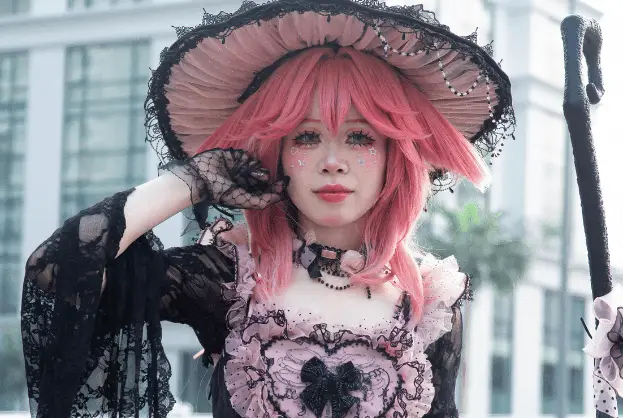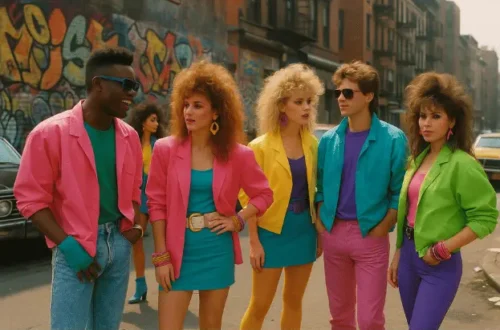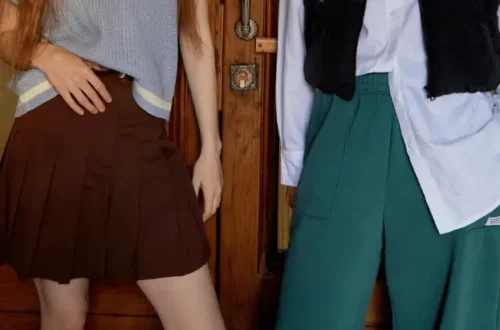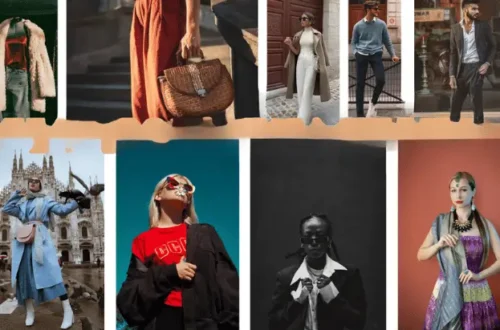
What Is Harajuku Fashion? A Journey Through Color & Culture
When you think of Japanese fashion, Harajuku is one of the first words that come to mind. Known for its vibrant creativity, fearless individuality, and experimental looks, Harajuku fashion is more than just clothing—it’s an entire culture. But what is Harajuku fashion exactly? Where did it come from, and why has it become such a global icon?
In this article, we’ll explore the history of Harajuku fashion, what the Harajuku look actually means, how Harajuku style in Japan evolved, and how it continues to influence popular fashion in Japan and beyond. Whether you’re fascinated by Harajuku style hair, makeup, or its rebellious spirit, we’ll break down everything you need to know about this unique style movement.
What Does Harajuku Mean?
Harajuku (原宿) refers to a district in Shibuya, Tokyo, known for being the epicenter of youth culture, eccentric fashion, and trend-setting subcultures in Japan. But more than its physical location, “Harajuku” has become synonymous with a bold and rule-breaking fashion aesthetic.
Literally, “Harajuku” means “meadow lodging” or “meadow inn” in Japanese, but culturally, it has come to represent a safe space for self-expression, rebellion, and creativity through fashion.
A Quick History of Harajuku Fashion
The history of Harajuku fashion dates back to the post-WWII era. When Allied troops occupied Japan, many foreigners stayed near Harajuku. This created a cultural exchange zone. Japanese youth were exposed to Western styles, music, and values.
By the 1970s, the Harajuku district was already attracting teenagers with experimental fashion tastes. It wasn’t until the 1980s and 1990s that Harajuku truly exploded as a cultural hub, thanks to:
Takeshita Street: A narrow street filled with thrift shops, DIY boutiques, and fashion-forward locals.
Fruits Magazine: A now-iconic Japanese street fashion publication that documented Harajuku styles weekly.
Subculture Rise: Subgenres like Lolita, Visual Kei, Decora, and Fairy Kei became more visible and celebrated.
In the early 2000s, Harajuku Japanese street fashion gained international recognition thanks to celebrities like Gwen Stefani, who introduced Harajuku Girls to Western audiences.
What Is Harajuku Known For?
Harajuku is known for being a melting pot of colors, textures, and subcultures. Unlike other fashion districts that chase trends, Harajuku thrives on anti-trend. It celebrates personal stories through fashion.
Here are a few things Harajuku is famously known for:
Individual Expression: No two looks are the same.
Mixing Eras and Genres: From Victorian to futuristic, from punk to princess.
DIY Fashion: Customizing thrifted clothes with pins, patches, and paint.
Hair and Makeup: Wild colors, gravity-defying hairstyles, and creative face art.
Harajuku Style in Japan: Core Subcultures
Lolita Fashion – Inspired by Victorian-era dresses and Rococo influences. Think petticoats, lace gloves, and porcelain doll vibes.
Decora Kei – The more accessories, the better. Layers of hairclips, neon clothes, and colorful stickers on their faces.
Visual Kei – A rock-inspired subculture where fashion meets theatrical performance. Heavy makeup, leather, and androgynous looks.
Fairy Kei – Soft pastels, nostalgic 80s toys, and ultra-girly silhouettes. Think My Little Pony meets kawaii.
Gyaru (Gal) – Tanned skin, dramatic eye makeup, dyed hair, and flashy outfits. It was a rebellion against traditional Japanese beauty norms.
Punk & Gothic Harajuku – Studded jackets, tartan skirts, black lipstick, and rebellious attitude.
These subcultures are not rigid; Harajuku fashion often blends multiple influences into a single look.
The Harajuku Look: Key Characteristics
So what defines the Harajuku look?
Layering: You might see someone wearing three skirts over pants with a corset and a sailor blouse.
Color Play: It could be pastels, neons, or monochrome—there are no limits.
Accessories: Everything from teddy bears to chains to handmade jewelry.
Statement Hair: Often dyed in vivid colors like pink, blue, green, or split tones. Wigs and hair extensions are also common.
Playfulness: Harajuku is about fun, experimentation, and not taking fashion too seriously.
Japanese Harajuku Culture and Its Global Influence
Harajuku Japanese street fashion is not just a local trend. Its energy has inspired countless global designers and artists. From Vivienne Westwood to Lady Gaga, the influence of Harajuku style is far-reaching.
Moreover, the rise of Instagram and TikTok has brought Harajuku visuals to a global audience, inspiring fashion enthusiasts to embrace DIY styling and challenge mainstream beauty standards.
Harajuku also impacts:
- K-pop and J-pop styling
- Anime and cosplay communities
- Runway fashion, especially in Asia and Europe
Why Harajuku Fashion Still Matters Today
Even though Harajuku isn’t as wild as it once was in the early 2000s, its spirit lives on. It continues to:
- Empower youth to explore identity
- Encourage fashion freedom and inclusivity
- Serve as an inspiration for innovation
- Resist fast fashion conformity
In an age of copy-paste influencer trends, Harajuku reminds us that style can be personal, weird, raw, and beautiful.
No. Harajuku is not any fashion.
It’s a movement, an attitude, and a lifestyle. It embraces freedom of self, storytelling through style, and rebellion against normalcy.
Whether you’re an aspiring fashionista or just curious about Japanese streetwear, understanding Harajuku helps you see how fashion can be more than just what we wear—it can be who we are.





